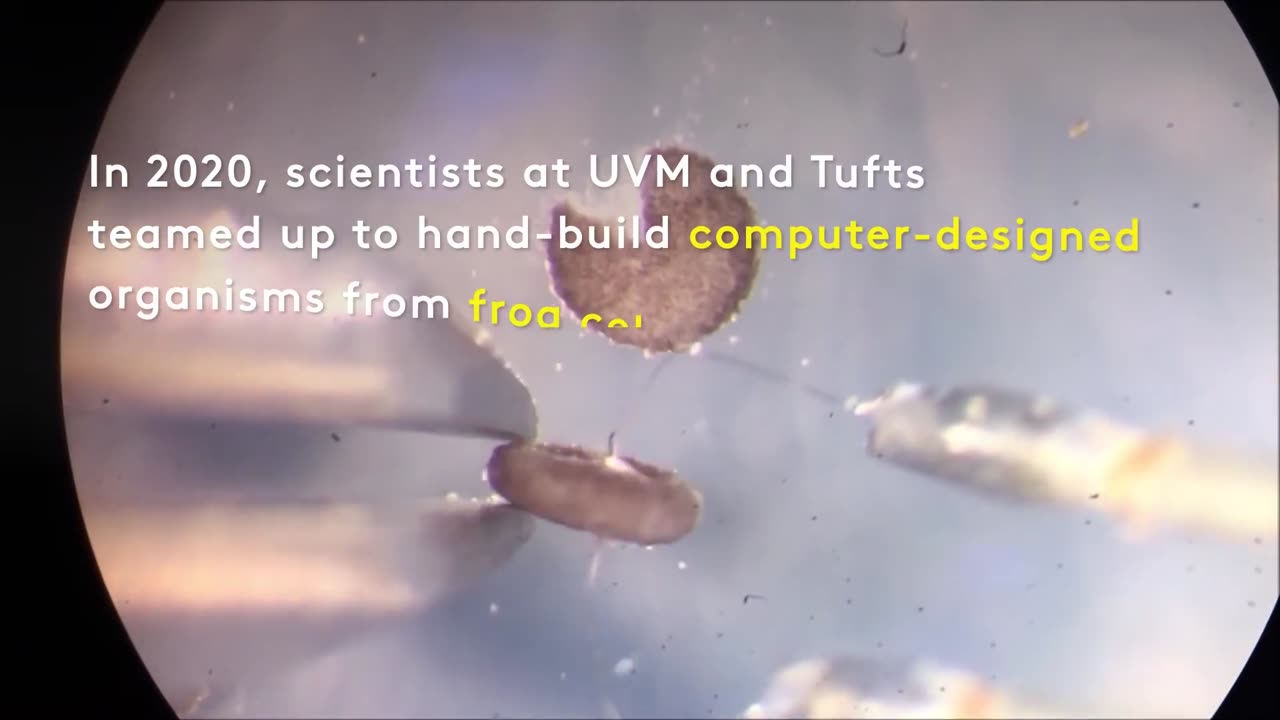Premium Only Content

World’s First Living Robots Can Reproduce
Formed from the stem cells of the African clawed frog (Xenopus laevis) from which it takes its name, xenobots are less than a millimeter (0.04 inches) wide. The tiny blobs were first unveiled in 2020 after experiments showed that they could move, work together in groups and self-heal.
Now the scientists that developed them at the University of Vermont, Tufts University and Harvard University’s Wyss Institute for Biologically Inspired Engineering said they have discovered an entirely new form of biological reproduction different from any animal or plant known to science.
The original study was published here:
Kinematic self-replication in reconfigurable organisms
Almost all organisms replicate by growing and then shedding offspring. Some molecules also replicate, but by moving rather than growing: They find and combine building blocks into self-copies. Here we show that clusters of cells, if freed from a developing organism, can similarly find and combine loose cells into clusters that look and move like they do, and that this ability does not have to be specifically evolved or introduced by genetic manipulation. Finally, we show that artificial intelligence can design clusters that replicate better, and perform useful work as they do so. This suggests that future technologies may, with little outside guidance, become more useful as they spread…
Scientists suggests that Artificial Intelligence remains in control of the robots and is able to postpone loss of replication. In days it can develop new qualities of artificial life.
We find that synthetic multicellular assemblies can also replicate kinematically by moving and compressing dissociated cells in their environment into functional self-copies. This form of perpetuation, previously unseen in any organism, arises spontaneously over days rather than evolving over millennia. We also show how artificial intelligence methods can design assemblies that postpone loss of replicative ability and perform useful work as a side effect of replication. This suggests other unique and useful phenotypes can be rapidly reached from wild-type organisms without selection or genetic engineering, thereby broadening our understanding of the conditions under which replication arises, phenotypic plasticity, and how useful replicative machines may be realized.
-
 13:15
13:15
Neil McCoy-Ward
5 hours agoThe Real Reason SILVER Just Surged to $70 (& What's Next...)
2583 -
 15:17
15:17
Upper Echelon Gamers
3 hours agoThe Epstein "Narrative" is Failing - Co-Conspirators
764 -
 1:11:43
1:11:43
vivafrei
3 hours agoEpstein Document Drop Confirms It WAS a "Hoax" - Breaking Down the Most Important Documents & MORE!
107K76 -
![[Ep 815] Santa Trump! | TPUSA AmFest Review w/ Sam Anthony. Chris Ripa, & Amber May](https://1a-1791.com/video/fwe2/cc/s8/1/C/I/w/K/CIwKz.0kob-small-Ep-815-Santa-Trump-TPUSA-Am.jpg) LIVE
LIVE
The Nunn Report - w/ Dan Nunn
3 hours ago[Ep 815] Santa Trump! | TPUSA AmFest Review w/ Sam Anthony. Chris Ripa, & Amber May
105 watching -
 1:39:31
1:39:31
The Quartering
5 hours agoFBI Accidental Epstein Leak Proves Coverup, Fake Evidence Also Leaked! Santa Joins ICE & More
120K71 -
 1:01:16
1:01:16
DeVory Darkins
5 hours agoTim Walz hit with MAJOR SETBACK after Minnesota Mayors turn on him publicly
109K90 -
 LIVE
LIVE
freecastle
7 hours agoTAKE UP YOUR CROSS- But thanks be to GOD, who gives us the VICTORY through our LORD JESUS CHRIST!
117 watching -
 4:56:36
4:56:36
LadyDesireeMusic
7 hours ago $4.07 earnedChristmas Spectacular! Last Stream Until After Christmas
35.8K2 -
 1:58:09
1:58:09
The Charlie Kirk Show
6 hours agoThe Epstein Finale? + JD Proves Himself + Economic Boom | 12.23.2025
127K44 -
 1:13:16
1:13:16
Sean Unpaved
6 hours ago49ers TAKE OUT Philip Rivers & Colts! | UNPAVED
42K4